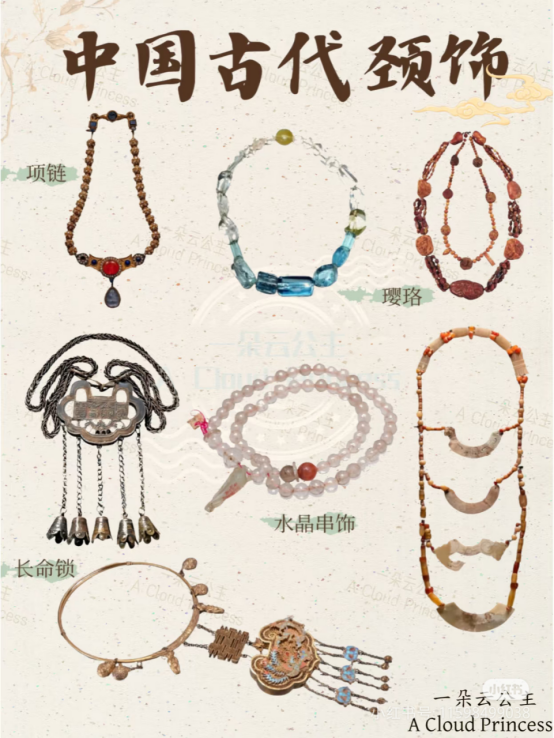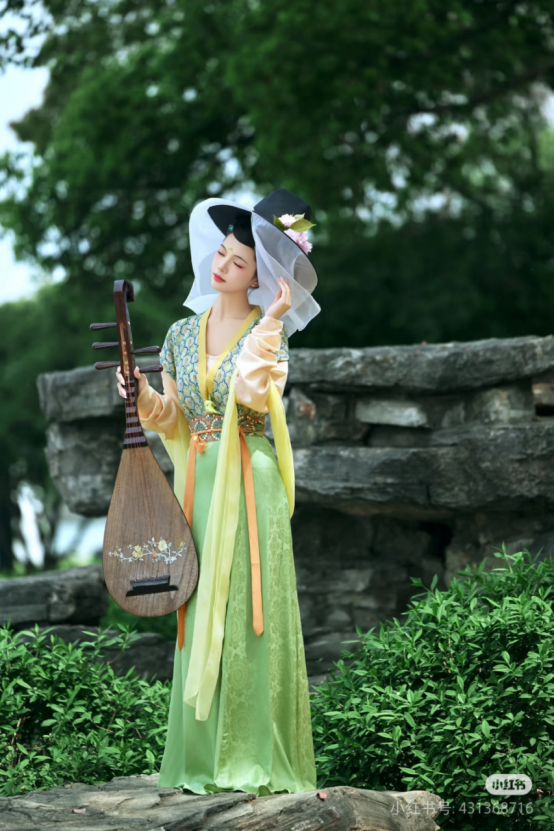The hats that people in the Tang Dynasty wore were called “Putoutou” (
幞头
)
In modern society, hats are often seen as mere decorative items or seasonal protective tools, and their functionality and ornamental value are gradually diminishing. However, in the headgear of men in the Tang Dynasty, “Putoutou” was not only a practical item for shielding from wind and rain but also a symbol representing social hierarchy, cultural integration, and aesthetics. Let’s trace the evolution of “Putou” in the Tang Dynasty today, and perhaps we can find elements from that era that could be useful in our own time.

How did “Putou” develop?
“Putou” originated from the head cloths of the Northern Dynasties, which were initially simple three-foot square black silks used to wrap up hair buns, facilitating daily work. By the Sui and Tang dynasties, “Putou” evolved into a headgear with four legs, made from silk gauze instead of silk, becoming light and stiff.
Its development path saw a balance between functionality and aesthetics: soft-legged “Putou” had fluttering ribbons, suitable for scholars and gentlemen; hard-legged “Putou” had wings that curved upwards, showcasing the majesty of warriors. For example, in the murals of the Yongtai Princess Tomb, there are headdresses that can protect against wind and keep warm while symbolizing power and status.In contrast, although modern clothing pursues comfort and individuality, it rarely integrates functionality and social aesthetics so seamlessly. The headdress styles of Tang Dynasty men greatly highlighted the image characteristics of men at that time.

“Hu Hat,” another type of hat poPutoular among the Tang people
If “Putou” reflected the inheritance and innovation of Han culture, then the poPutoularity of the “Hu Hat” showcased the Tang men’s inclusiveness and reinterpretation of foreign aesthetics. On the streets of Chang’an, deep-set-eyed and tall-nosed Hu merchants wore pointed silk hats adorned with jewels on the brims; Chinese men imitated this style by modifying the rounded hats into flat tops with high crowns, retaining the windproof function while integrating central plains aesthetics. The result of this cultural grafting,similar to how today’s “Guochao” (national trend) movement adapts Western designs through localization?However, the unique aspect of the Tang Dynasty lay ,The integration of Hu and Han cultures was not a simple pasting of symbols, but it is a deep fusion based on practical needs and aesthetic consensus, This holds significant reference value for us today in further shaping our culture.


What is the symbolic significance of headdresses in the Tang Dynasty?
The significance of headdresses in the Tang Dynasty lies in transforming the strict hierarchical system into a visualized aesthetic system. Emperors’ headdresses (such as Daqiu Mian, Gun Mian, etc.) distinguished ritual occasions by the number of beads and the complexity of patterns; officials’ Jin Xian Guan identified ranks by the number of beams, with those above the third rank having three beams and those at the ninth rank having only one. Even the “Wu Sha Mao,” which later became a synonym for official positions, originated from the dark blue silk gauze material of Tang “Putou”.

Today, this system of “distinguishing positions through attire” may seem rigid, but the underlying aesthetic logic it contains has far-reaching implications-precise coding of colors, shapes, and patterns creates a visually orderly political system. We should not stop at its feudal significance but also recognize the deep value of ancient garment aesthetics in reproducing human spirit. Looking at contemporary society, despite promoting equality, we have lost the collective tacit understanding of conveying cultural consensus through attire. As we dissolve all ritual senses with “leisure,” have we forgotten the deeper value of attire as a carrier of civilization?
The evolution of headgear for men in the Tang Dynasty is, in fact, a microcosmic cultural epic. From the ritual innovation of “Putou” to the exotic charm of “Hu Hat,” from the hierarchical order of crowns to the symbolic transformation of Wu Sha, each hat carried practical wisdom, political metaphors, and aesthetic Putoursuits.







